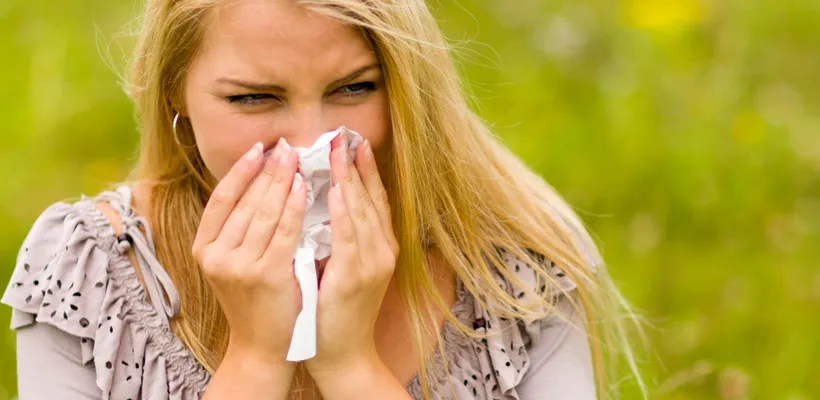Prepare Early for Hayfever Season 2019

Published: 11th February, 2019 in: Health Advice
To non-sufferers, the idea of thinking and planning way ahead in order to combat a little hayfever seems a bit drastic. To those of us sadly in the know, hayfever season can signal a period of incredibly frustrating symptoms and hassle. Planning ahead can be one of the best ways to combat this.
Essentially the body’s immune system overreacting to pollen drifting through the atmosphere, May to July can be an irritating and frustrating period of runny noses, watery eyes, itchy throats, headaches, and the general disruption and loss of focus that comes with these symptoms.
We know that it can make for an incredibly trying time, which is why we’ve put together a range of actionable tips. From preparing the home to choosing treatments, here’s how you can get ready for the coming hayfever season.
Pay Attention to the Pollen Forecast
Before anything else, you want to make sure you’ve got the pollen forecast bookmarked and ready to go. Being able to know what’s coming can allow you to make use of all the other strategies and combat hayfever.
Published by the Met Office, the pollen count measures the number of pollen particles in the atmosphere around the UK and can be effectively used to gauge how bad the day’s hayfever is going to be. This allows sufferers to take medication, extra showers, keep windows shut, etc. Make sure you keep an eye on the pollen forecast, it’ll allow you to effectively plan ahead.
Make Use of Medications and Treatments
While many medications and treatments for hayfever don’t work for everyone, with a bit of experimentation, you can find antihistamines, creams, nasal sprays and eye drops that can allow you to alleviate the various symptoms of hayfever.
The best approach is always going to be having some treatments in the cupboard, ready to go. No one likes putting up with hayfever while they wait a couple days for delivery, so plan in advance, and get the treatments that you know work for you ready to go.
Cleanliness and New Home Rules
Taking showers whenever you’re coming in from outside, and generally keeping your home clean can effectively reduce pollen count in the home. As well as keeping yourself clean, you want to look into ways to make sure your home stays as pollen free as possible.
Keeping windows shut, even though it might be warm outside, can prevent pollen from drifting into the home. Pets can also carry pollen into the home, so consider a bedroom or upstairs ban during the hayfever season, or potentially regular baths for dogs.
Taking your shoes off at the door can also help, as well as regularly changing bedding. In essence, it’s all about considering where pollen can settle, and how you can avoid pollen entering your home.
If you really want to plan into the future and maximise your home’s anti-allergen potential, look into removing carpets and fabrics in general. Carpets and curtains house dust, allergens and other nasties and can easily become covered in pollen. Blinds and hard flooring can make for a much easier to clean environment where you can cope much more effectively with allergens.
Invest in an Air Purifier
One of the most effective ways to make sure your home is as free from pollen, mould and other airborne allergens as possible, an air purifier can be a solid way to go. Positioned strategically throughout the home, they can effectively clean the atmosphere, providing effective relief for hayfever sufferers.
There’s lots of different models and options out there, from more budget options to premium systems, but if you shop around, you’re sure to find an air purifier that’ll work for your home. Just having one in your bedroom can boost quality of sleep enormously during the hayfever period, and this can really help when it comes to coping with the day.
If you’re interested in pursuing a more natural air purification route, NASA published findings several years ago that certain houseplants can effectively purify the air, removing pollen, mould, and toxins.
For the more green-fingered among us (who haven’t developed a hayfever-inspired hatred for all plants!), having a couple of these around can really improve air quality.
Consider Other Allergens
Obviously, while the main problem during hayfever season is always going to be pollen, it’s important to consider other allergens that could be exacerbating your symptoms.
During periods of hayfever, we can be more sensitive to other allergies that might not bother us all that much the rest of the year.
For instance, certain foods, pets, and dust can all make your hayfever more intense than it needs to be. Look into cutting out foods that have affected you in the past, as well as keeping up with all the other strategies for coping with dust and pet dander.
Just regular vacuuming in the home can make a huge difference, but any kind of strategic approach to allergen control will help with all allergens in the home and not just pollen.